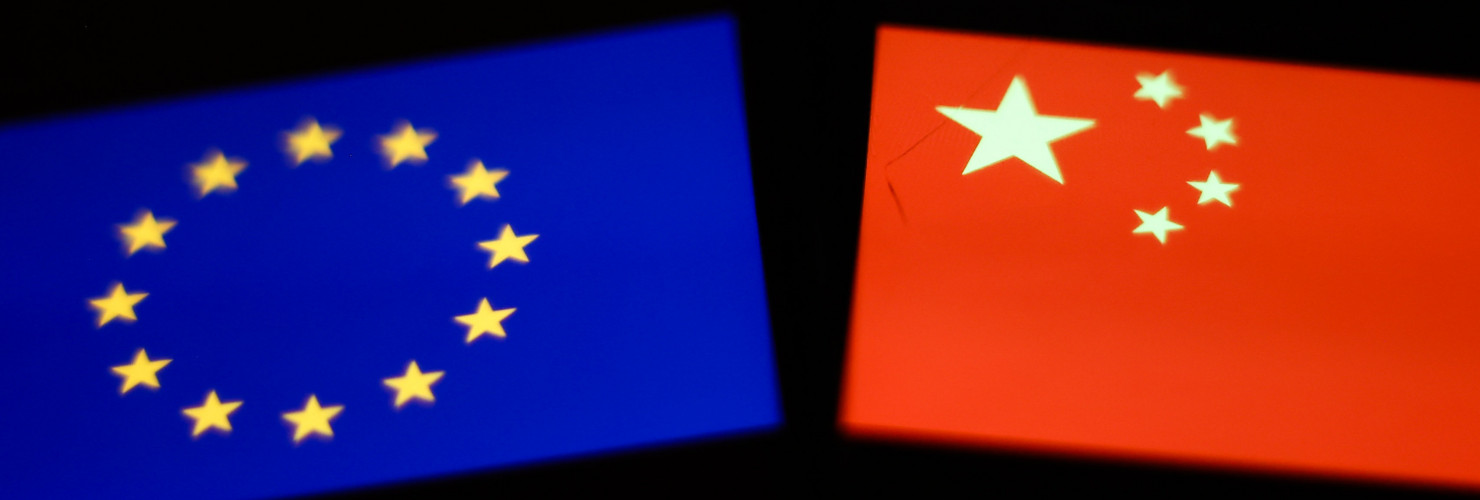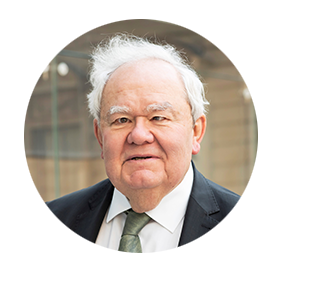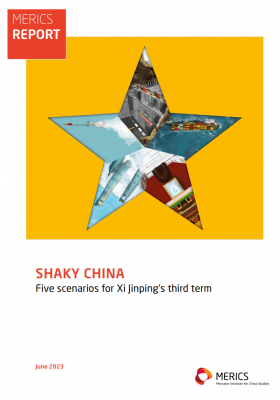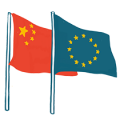
MERICS EU-China Opinion Pool: Recalibrating EU’s China policy
The European Council will discuss the approach to China at its 2-day summit on June 29/30. EU Commission President Ursula von der Leyen has put forward her agenda for de-risking relations with China, while Germany is finalizing its long-awaited China strategy. French President Emmanuel Macron visited Beijing, expressing interest in reopening relations after COVID, while several Central and Eastern European member states have been reassessing their stance on China in view of Beijing’s continued support for Moscow despite Russia’s invasion of Ukraine.
In this round of MERICS’ EU-China opinion pool, MERICS Analyst Grzegorz Stec asked several experts:
As the EU recalibrates its China policy, what needs to change?
François Godement
Special Advisor and Resident Senior Fellow - Asia and America at Institute Montaigne

It is time for the EU to take concrete steps in its China policy. Neither engagement nor calls for reciprocity have had much result with China, even if both remain necessary. Deals are there for companies of technological interest to Beijing, and meetings as well, even more so with member states. Overall, from China’s leaning towards Russia to its mercantilist policies, as well as its abhorrent human rights practices and looming risks across the Taiwan Strait, facts deny the good words that China has issued to partners it deems reserved towards the United States. At the same time, European hard power capacities in the Indo-Pacific are limited, and the test of Ukraine is Europe’s primary concern today.
Our policy recommendations are simple: reinforce the implementation of EU defensive measures, in terms of coordination or delegation, speed and depth. On the broad issues where the EU has significant weight, if not a fully realized strategic capacity, focus on liaising and coordinating with reasonably like-minded partners – such as the United States, Japan, India and Korea. This will require concessions. We do not see eye to eye with the US on some digital issues. We do not endorse wholesale all of India’s domestic politics. We would wish for a more proactive role of Japan in defense.
These differences, and many others, pale in comparison to the gap that has opened with China (and Russia, of course). A rules-based Europe must become more geopolitical and pragmatic in its actions. Persuading the so-called “Global South” requires attention to their interests. EU autonomy in practice will not happen through self-sufficiency or splendid isolation, but by deepening joint policies with those of our partners who are not systemic rivals.
Alicia Garcia-Herrero
Chief economist for the Asia pacific at NATIXIS and Senior Fellow at Bruegel

Economic relations between the EU and China have been on a rollercoaster – but with a clear downward path. Beyond political reasons – from reciprocal sanctions in early 2021 to China’s ambiguous position on Russia’s invasion of Ukraine – the EU’s economic benefits from China are waning. On the economic front, EU member states – including Germany – have become very dependent on imports from China for their energy transition. The EU’s trade deficit with China surged in 2022 with no improvement in sight, as China’s imports from the EU continue to shrink just as the EU accelerates its energy transition, mostly using Chinese imports. Adding to their woes, European companies are also concerned about the loss of third markets to competition from China, given that China’s export structure is increasingly similar to that of European countries, especially Germany.
The EU has woken up and responded to this new reality by further defining its position on China from that of engagement, competition and rivalry to one dominated by de-risking, at least in the narrative. While maintaining its “Holy Trinity” at least in principle, Brussels is putting the implementation of the de-risking strategy at the forefront with new legislation, such as the Critical Raw Materials Act (CRM), aimed at reducing its dependence on China for critical materials needed for its energy transition. One can expect more to come as the EU’s strategic dependence on China for its energy transition becomes more obvious to governments and the public at large.
Björn Jerdén
Director of the Swedish National China Centre

Why is the EU shifting its stance on China? Many European policymakers see these changes as a necessary reaction to the evolving leadership of Xi Jinping. As German Chancellor Olaf Scholz wrote in Politico in November 2022, “... today’s China isn’t the same as the China of five or 10 years ago. . . . And as China changes, the way that we deal with China must change too.”
Undoubtedly, Xi has steered China toward a concerning trajectory, but the change in our perception of China is far more profound. It is crucial to recognize that China remained one of the world’s most oppressive dictatorships throughout the “golden era” of European engagement there, with only minimal advancements in political reform.
There are a few problems with the notion that we are merely reacting to a changing China. It may foster exaggerated hopes for the Communist Party’s capacity for reform. After all, if Xi Jinping has completely transformed China as claimed by many, couldn’t a new leader easily steer China back on the “right track”? Moreover, it makes our policy appear incoherent and insincere to the Chinese side, which in turn makes it more difficult for us to understand China’s reaction to our shifting policies.
To be perfectly clear: I generally believe that the European reassessment of China has been both correct and positive. However, let us admit that we in Europe were mistaken in our previous understanding of China. Our policy changes stem primarily from this realization rather than being solely a reaction to China’s own transformations.
Una Bērziņa-Čerenkova
Head of the Asia program at the Latvian Institute of International Affairs,
European China Policy Fellow at MERICS

It's time to streamline the message. The EU has been ambiguous in its China policy and this approach has been helpful in keeping the door open for conversation with Beijing. However, it has had one major drawback – Beijing has been able to discount Brussels' pressures by falling back on its bilateral relationships with major European trading partners. This has allowed it to portray the EU as the “voice of reason towards China” in its domestic policymaking perception. This perception is rooted largely in the debate on European strategic autonomy, the China-related elements of which Beijing reads as unofficially resting on three notions: 1) distancing from the US China policy, 2) maintaining a level of economic pragmatism vis-a-vis China, and 3) staying out of issues far from home, e.g., Taiwan.
These elements lead China to think that EU equidistance with the US and China is possible: “If the EU insists on thinking that European and American relations take precedence and Sino-European relations take a back seat, it will be difficult to get rid of the negative influence of external factors such as the US on Sino-European relations,” a People’s Daily op-ed argues. This means one thing: the EU's signaling of its geopolitical position has left room for interpretation on the Chinese side, as witnessed by communications during the recent visit of the Special Representative of the Chinese Government on Eurasian Affairs Li Hui to the EU, Ukraine, and Russia.
As the European Council discusses its approach to China, streamlining its messaging should be a priority. Decentralized messaging is no longer serving the goal of ambiguity but is instead providing China with an alternative reading of the EU's geopolitical trajectory.
François Chimits
Analyst, MERICS

Francesca Ghiretti
Analyst, MERICS

Grzegorz Stec
Analyst, MERICS

The EU’s approach towards China could benefit greatly from clearly defining and prioritizing short- and mid-term objectives based on the bloc’s existing strategic assessment of China. While the three-pronged approach – China as a cooperation partner, economic competitor and systemic rival – outlined in the 2019 EU-China Strategic Outlook has helped align the China policies of member states, the 10 action points outlined in the document need updating. Doing so will enable the EU to navigate rapidly evolving policy challenges, including strategic dependencies on China, growing US-China strategic competition or mounting geopolitical tensions in Ukraine and the Taiwan Strait. Moreover, it will give the bloc more time to discuss a recalibration of its overarching China policy.
We suggest focusing on three objectives:
- De-risk: The updated action points should reflect the growing significance of economic competition and systemic rivalry with China. De-risking requires conducting a risk assessment rooted in a common EU methodology and implementing tangible and enforceable policies in response.
- Engage: Develop ways to engage Beijing in a constructive yet assertive manner on topics such as the green transition and debt restructuring.
- Coordinate: Improving both internal and external coordination should be a priority for the EU and member states. Internally, the EU should focus on better coordinating China policies to ensure that member states implement measures more coherently and to avoid miscommunication. One way to achieve this is by conducting periodic assessments of how action points are being implemented and possibly update these in two-year cycles. Externally, the EU and member states should focus on stronger coordination with partner countries to amplify the EU's role in addressing common concerns related to China.
The MERICS experts have proposed updates to the 2019 action points in a dedicated publication. Learn more here.

This MERICS EU-China Opinion Pool is part of the “Dealing with a Resurgent China” (DWARC) project, which has received funding from the European Union’s Horizon Europe research and innovation programme under grant agreement number 101061700.
Views and opinions expressed are however those of the author(s) only and do not necessarily reflect those of the European Union. Neither the European Union nor the granting authority can be held responsible for them.

